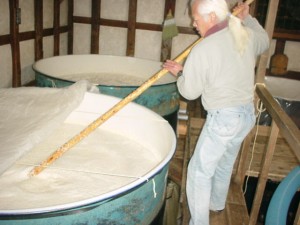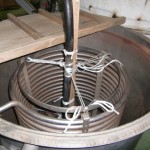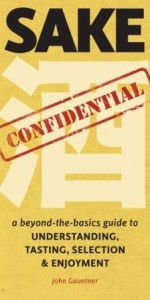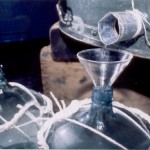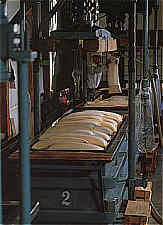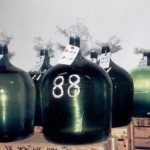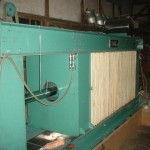Sake Professional Course
To be held at Sunda Restaurant in Chicago Illinois, August 12 – 14, 2014
From Tuesday, August 12 through Thursday, August 14, 2014, I will hold the 15th 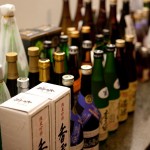 stateside version of the Sake Professional Course at Sunda restaurant in downtown Chicago. The content of this intensive sake course will be identical to that of the Sake Professional Course held each January in Japan, with the exception of visiting sake breweries. The course is recognized by the Sake Education Council, and those that complete it will be qualified to take the exam for Certified Sake Specialist, which will be offered on the evening of the last day of the course.
stateside version of the Sake Professional Course at Sunda restaurant in downtown Chicago. The content of this intensive sake course will be identical to that of the Sake Professional Course held each January in Japan, with the exception of visiting sake breweries. The course is recognized by the Sake Education Council, and those that complete it will be qualified to take the exam for Certified Sake Specialist, which will be offered on the evening of the last day of the course.
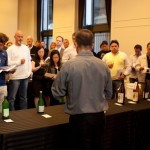 The course is geared toward industry professionals wishing to expand their horizons in a thorough manner into the world of sake, and will therefore be somewhat technical in nature, and admittedly somewhat intense. It is likely more than the average consumer needs! But the course is open to anyone with an interest and sake and will certainly be enjoyable. The course lectures and tasting will begin with the utter basics, and will thoroughly progress through and cover everything related to sake. There will be an emphasis on empirical experience, with plenty of exposure to a wide range of sake in the tasting sessions throughout the three days. Each of the three days will provide the environment for a focused, intense and concerted training period.
The course is geared toward industry professionals wishing to expand their horizons in a thorough manner into the world of sake, and will therefore be somewhat technical in nature, and admittedly somewhat intense. It is likely more than the average consumer needs! But the course is open to anyone with an interest and sake and will certainly be enjoyable. The course lectures and tasting will begin with the utter basics, and will thoroughly progress through and cover everything related to sake. There will be an emphasis on empirical experience, with plenty of exposure to a wide range of sake in the tasting sessions throughout the three days. Each of the three days will provide the environment for a focused, intense and concerted training period.
 The goal of this course is that “no sake stone remains left unturned,” and my motto is “exceed expectations for the course.” Every conceivable sake-related topic will be covered, and each lecture will be complimented and augmented by a relevant tasting session. Participants will not simply hear about differences based on rice types or yeast types, they will taste and smell them. Students will not only absorb technical data about yamahai, kimoto, nama genshu, aged sake and regionality, they will absorb the pertinent flavors and aromas within the related sake as well. Participants will taste over 80 sake within five focused tasting exercises across the three days.
The goal of this course is that “no sake stone remains left unturned,” and my motto is “exceed expectations for the course.” Every conceivable sake-related topic will be covered, and each lecture will be complimented and augmented by a relevant tasting session. Participants will not simply hear about differences based on rice types or yeast types, they will taste and smell them. Students will not only absorb technical data about yamahai, kimoto, nama genshu, aged sake and regionality, they will absorb the pertinent flavors and aromas within the related sake as well. Participants will taste over 80 sake within five focused tasting exercises across the three days.
 Like its counterpart held in Japan each winter, it will be quite simply the most thorough and comprehensive English-language sake education in existence. Participants will also be presented with a certificate of completion at the end of the course.
Like its counterpart held in Japan each winter, it will be quite simply the most thorough and comprehensive English-language sake education in existence. Participants will also be presented with a certificate of completion at the end of the course.
Also, as mentioned above, an exam is given at the end of the course for those that choose to seek certification. Those that pass receive a “Level I Sake Specialist” certification from the non-profit organization The Sake Education Council.
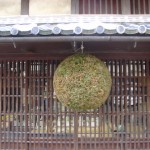 The cost for the three-day class, including all materials and sake for tasting, is US$850. Participation is limited and reservations can be made now to secure a seat, with payment due by July 15, 2014. You can read Testimonials from past participants here. (Should that link not work, which is a possibility for technical reasons, I can send you the same by email.) For reservations or further inquiries, please send an email to sakeguy@gol.com.
The cost for the three-day class, including all materials and sake for tasting, is US$850. Participation is limited and reservations can be made now to secure a seat, with payment due by July 15, 2014. You can read Testimonials from past participants here. (Should that link not work, which is a possibility for technical reasons, I can send you the same by email.) For reservations or further inquiries, please send an email to sakeguy@gol.com.
“No Sake Stone Remains Left Unturned!”
~~~~~~~~~~~~~~~~~~~~~~~
Syllabus and Daily Schedule
Day I
9:00 – 12:30 Welcome, Orientation, Sake Basics, Sake Types, Terms found on Sake Labels
Tasting I: typical representatives of various grades, milling rates
1:00 – 3:00 Sake Production
3:00 – 4:30 Rice Types, Yeast Types, Water, Koji
Tasting II: Rice types, Yeast types
 Day II
Day II
9:00 to 12:00 Sake Chemistry: nihonshu-do, acidity, amino acidity.
Yamahai and Kimoto
Tasting III: Yamahai and Kimoto.
12:00 to 1:00 Lunch
1:00 – 5:00 All things nama-zake. Pressing methods. Aging and maturity. Non-standard sake types like nigori, low alcohol sake, sparkling sake, red sake, taruzake etc. Sake competitions. Vessels, temperature, toji guilds.
Tasting IV: Nama-zake, aged sake, various non-standard sake. The same sake in various vessels. Sake suited for warming. Competition sake.
Day III
9:00 – 12:00 Sake regionality, sake and food, sake competitions, history, the state of the industry.
Tasting V: Sake Regionality
12:00- 1:00 Lunch
1:00 – 3:00 Break
3:00 – 4:30 Exam





